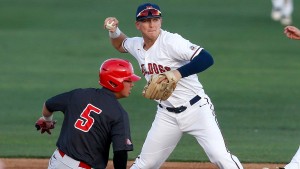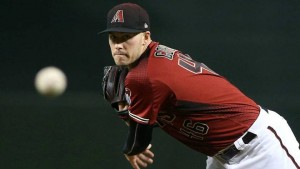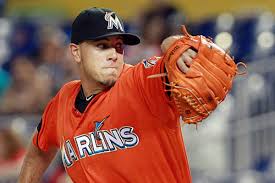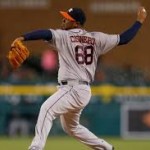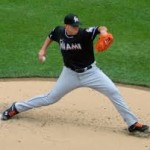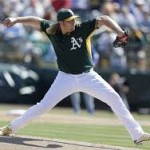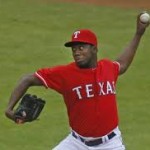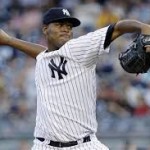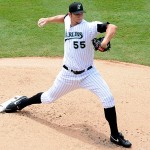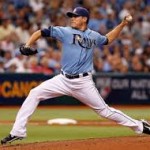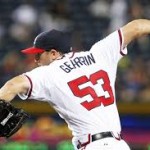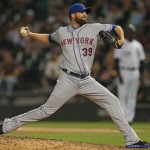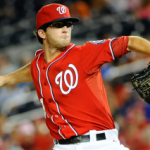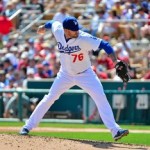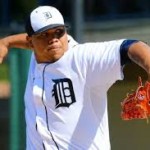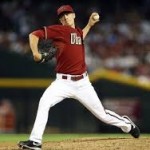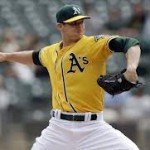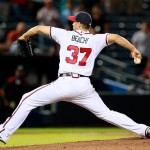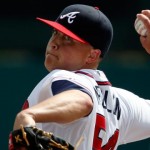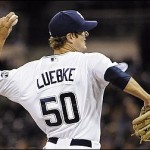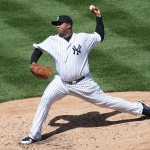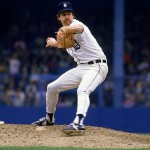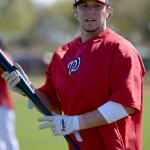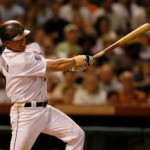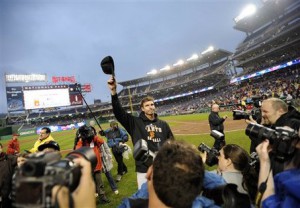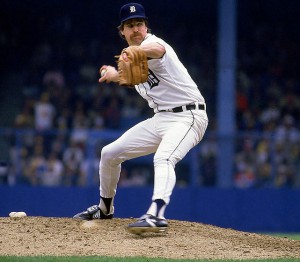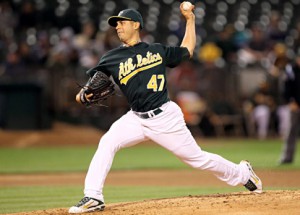Another year in the books, and another 40 guys now potentially part of the Nats organization.
We reviewed the top 10 more in-depth in the previous post. Lets zip through the rest of the draft and do some quick commentary as needed. I’m basically depending on BA’s scouting reports for observations (hey, I finally subscribed, so might as well use them).
- Round 11: J.T. Arruda, Fresno State’s starting SS. Redshirt Sophomore, with no Baseball America scouting profile (which is odd, because they have hundreds and hundreds of them). Stat line at Fresno State looks good, but so does everyone else’s on that solid team. But he does have a good combo of power and speed. Undersized (5’10”) and clearly a 2B/SS type guy. An interesting selection with #11, which is generally where you try to find guys who slipped out of the top 5-6 rounds who may sign. I’d like to see something like a Max Schrock or Steven Lombardozzi career out of him; good hit tool, utility infielder who can stick around and help.
- Round 12: Orlando Ribaltra, Miami Dade Juco RHP. Graduated HS in 2016 so he’s basically a College Jr. Already a reliever, hit 97 and scouts think he can go higher. Secondary pitches lacking (hence already being a reliever, even in Juco). I’m guessing he’s straight tot he closer role in Short-A and stays there all the way up. BA lists no xfer commitment and I think its safe to say he’ll sign for the $125k or close to it.
- Round 13: Jake Randa, NW Florida State Juco Corner OF. BA says he’s one of the best JuCo hitters in the country; he slashed .412/.507/.753 as a freshman before cooling a bit in 2019. He also impressed this past summer in the Wood bat Northwoods league. He was projected to go in the 6th-7th round or so this year and slipped. Has committed to transfer to Mississippi State and I think he’s a tough sign here; if he was projected 6th round and has an SEC xfer commitment, why would he sign for $125k when he could do one more year of school on the big stage and really make himself some money?
- Round 14: Lucas Knowles, Central Arizona Juco LHP. Interesting story; he was a weekend starter as a RS freshman for U-Washington, then left when they didn’t pony up a scholarship. He does have an xfer commitment to Kentucky for his Junior year, but he’s already got three college years (he redshirted with TJ surgery, so this Juco year was his 3rd college season). He profiles like a Tom Glavine type: 88-91, control lefty with four pitches. I think he signs in lieu of xferring to his 3rd program in four years and gets started. I’d like to think he’s a 2019 Short-A/2020 Low-A rotation guy for us.
- Round 15: Davis Moore, Fresno State weekend RHP starter. Numbers don’t look great (3.91 ERA) but its also a hitter’s league (the Mountain West Conference has teams in Vegas, Reno, Colorado Springs, Albequerque and Fresno, all altitude/dry air places. Even San Jose, despite being on the Pacific coast, is in a dryer climate that far inland). He really pitched well against Stanford in the regional too, perhaps impressing scouts to bump him a bit. Sinkerballer, not a ton of velocity but scouts think his sinker will really play against wood bats. I like his profile especially against lower-level wood bats.
- Round 16: Junior Martina, Western OK State Juco SS. BA doesn’t have a scouting report on him, and Western Oklahoma State’s stat page doesn’t have him on the roster, at least not by the name “Junior Martina.” If he goes by “Junior Osebo” instead, then he was a middle reliever with decent stuff and decent stats. I don’t know if he’s got a 4yr transfer commitment. An enigma.
- Round 17: Amos Willingham, RHP starter from Georgia Tech. No BA scouting report, but he ended the season as the #1/Friday night starter for one of the best collegiate teams in the country this year and pitched for them in the opener of their CWS regional (getting a 6ip 2-run quality start win). His stat line on the season is poor: 5.19 ERA, but he came on strong at the end. Some internet research showed that he was a Juco xfer to Georgia Tech, and sometimes suffers from a strength-sapping stomach ailment that may explain some bouts of ineffectiveness. I wonder if he’s signable, given that he’s at a big-time program, finally started to shine in Ga Tech’s rotation towards the end of the year, and may want another shot at improving upon his ERA as a senior.
- Round 18: Mason Doolittle, C from Palm Beach Juco in Fl. No BA scouting report, but does have an xfer commitment to Appalachian State.
- Round 19: Tyler Yankowsky, RHP reliever from Division II Millersville U. He’s already been dumped from the rotation to the bullpen in a Div-II school, but BA says he’s mid-90s with a good cutter and a fringe curve. BA’s scouting report also has this weird quote: “An excellent golfer in high school, Yankowsky’s command and delivery explain why he’s a reliever.” I’m not sure what his command and delivery have to do with the fact that he was a good golfer in high school; frankly, most every top baseball hitter I know is also a good golfer. Why? because golf requires the exact same hand-eye coordination that hitting a baseball requires. Anyway; he’s 6’6″ with a two-pitch mix; sounds like a good pro reliever for the time being.
- Round 20: Jack Dunn, Senior SS from baseball hot-bed Northwestern. 1st team all big-10 his senior year. Not much else out there about him; no BA scouting report. He’s from Georgia and was decently regarded out of HS. Looks like a lead-off hitter for Northwestern, decent stats, decent OBP. Maybe he’s the 2B half of a double play combo in Short-A with Arruda.
Past Round 20, I’ll just note interesting guys; see the table above for the next 20 picks fully.
- Seven of the Ten picks in the Rounds 21-30 are college seniors, mostly position players, likely filling out Short-season squads with $5k-$10k players.
- Round 22: Allan Berrios, a Juco 3rd year Catcher from the same Western Oklahoma State team as 16th rounder Martina. Perfect game has absolutely nothing on the guy, not even ranked coming out of Florida as a prep. BA has nothing. An interesting pick. But here’s the guy’s slash line this year: .427/.484/.729. In 53 games he had 12 homers, a 20/17 K/BB ratio and even had 17 SBs. Holy cow. He was batting above .500 for more than half the season. I get that this is Juco and not as competitive as 4-year conferences, but this is also not exactly slow-pitch softball, and to hit this well against guys trying to get you out is pretty impressive.
- Round 23; Michael Cuevas, the first Prep/HS player taken by the Nats in the 2019 draft. Drafted as a RHP, committed to a JuCo program, so this seems like an odd pick here.
- Round 25: Quinn Parker, a 1b from Hofstra. Notable b/c the Nats also drafted him in 2015 out of HS, in the 40th round.
- Round 29: Brandon Gonzales is the 2nd Prep/HS player taken; he may be a legacy pick as the Nats central region cross checker is Jimmy Gonzales. He’s committed to a texas Juco.
- Round 33: Cutter Clawson is a prep LHP with a BYU commit (which usually means Morman, which usually is a tough commitment to buy out), so this seems like a throw-away pick.
- Round 35: Bryce Osmond was a top 50 prospect heading into the draft, and when he fell out of the top two rounds he basically guaranteed his attendance to college (in his case, top program Oklahoma State).
- Round 37: Tei Cruz, notable b/c he’s a third generation baseball player (grand father Jose Cruz, father Jose Cruz Jr.). He’s at Rice, seems like a good bet now to stay there.
- Round 39: Jake Bennett is a LHP committed to Oklahoma.
Summary of the Draft class:
- 19 Arms, 20 bats.
- 14 College Juniors (or draft-eligible Sophomores)
- 9 College Seniors with no leverage
- 8 Juco guys (!)
- 8 High Schoolers, 7 of which are basically throw-away picks in later rounds or legacy picks.
No less than 8 Juco guys, most of which were in the 11-20 range. This is an interesting strategy.
Of the 23 4-year college guys:
- 3 from SEC teams: Arkansas, Florida, LSU
- 1 from Pac-12 teams: UCLA
- 3 from ACC teams: Florida State, Georgia Tech, Boston College
- 1 from Big10 teams: Northwestern
- 0 from Big12 teams
- 2 from MWC teams: Fresno State (2)
- 1 from C-USA teams; Rice
- 7 from smaller Div 1 programs: BYU, Texas State (2), Tennessee Tech, Hofstra, College of Charleston, UC Irvine
- 5 from non division 1 programs: Lubbock Christian, Millersville, Biola, South Dakota State, Berry,
Not one team from the typical feeding ground of Big-12 Texas/Oklahoma programs this year. Instead, a lot of geographic diversity from a ton of different programs.
Geographic Locations of picks:
- 9 from Texas Schools
- 6 from California schools
- 5 from Florida schools
- 4 from Oklahoma schools
that’s 24 of 39 picks just from four states. And the Texas/Oklahoma area again is well represented in our draft class.
Signability: my quick glance at this class, assuming there’s no signing issues with anyone in our top 10, I think we end up signing somewhere around 28 of these draftees. Here’s my predictions:
- 6 of the 8 JuCo guys sign, missing out on #13 Randa and #34 Battles
- all 9 College Srs sign
- Just 1 of the 8 HS guys sign (#23 Cuevas)
- 12 of the 14 College So/Jrs sign, missing out on #17 Amos and #37 Cruz.
Here’s a table with all our picks picks.
| Round | Overall | Name | Position | Col/HS | College or Cmtm | State | Slot Value |
|---|---|---|---|---|---|---|---|
| 1 | 17 | Rutledge, Jackson | RHP (Starter) | Col J2 | San Jacinto College North (TX | TX | 3609700 |
| 2 | 57 | forfeited | forfeited | ||||
| 3 | 94 | Mendoza, Drew | 3B | Col Jr | Florida State U | FL | 618200 |
| 4 | 123 | Cronin, Matt | LHP (Reliever) | Col Jr | Arkansas | AR | 464500 |
| 4-comp | 139 | forfeited | forfeited | ||||
| 5 | 153 | Dyson, Tyler | RHP (Starter) | Col Jr | Florida | FL | 346800 |
| 6 | 183 | Cluff, Jackson | SS | Col So | BYU | UT | 266000 |
| 7 | 213 | Peterson, Todd | RHP (Reliever) | Col Jr | LSU | LA | 208200 |
| 8 | 243 | Ydens, Jeremy | OF (CF) | Col Jr | UCLA | CA | 169500 |
| 9 | 273 | McMahon, Hunter | RHP (Starter) | Col Jr | Texas State | TX | 152600 |
| 10 | 303 | Pratt, Andrew | C | Col Sr | Lubbock Christian | TX | 144100 |
| 11 | 333 | Arruda, J.T. | SS | Col Jr | Fresno State | CA | |
| 12 | 363 | Ribalta, Orlando | RHP (Reliever) | Col J2 | Miami Dade | FL | |
| 13 | 393 | Randa, Jake | OF (corner) | Col J2 | NW Florida State | FL | |
| 14 | 423 | Knowles, Lucas | LHP (Starter) | Col J3 | Central Arizona College | AZ | |
| 15 | 453 | Moore, Davis | RHP (Starter) | Col Jr | Fresno State | CA | |
| 16 | 483 | Martina, Junior | SS | Col J2 | Western Oklahoma State | OK | |
| 17 | 513 | Willingham, Amos | RHP (Starter) | Col Jr | Georgia Tech | GA | |
| 18 | 543 | Doolittle, Mason | C | Col J2 | Palm Beach CC | FL | |
| 19 | 573 | Yankosky, Tyler | RHP (Reliever) | Col Jr | Millersville University | PA | |
| 20 | 603 | Dunn, Jack | SS | Col Sr | Northwestern | IL | |
| 21 | 633 | Strohschein, Kevin | 1B | Col Sr | Tennessee Tech | TN | |
| 22 | 663 | Berrios, Allan | C | Col J3 | Western Oklahoma State | OK | |
| 23 | 693 | Cuevas, Michael | RHP (Starter) | HS | Texas Rio Grande Valley | TX | |
| 24 | 723 | Alu, Jake | 3B | Col Sr | Boston College | MA | |
| 25 | 753 | Quinn, Parker | 1B | Col Sr | Hofstra | NY | |
| 26 | 783 | Hart, Dupree | 2B | Col Sr | College of Charleston | SC | |
| 27 | 813 | Hubbard, Jaylen | 3B | Col 5Sr | Texas State | TX | |
| 28 | 843 | Bocko, Jordan | RHP | Col Sr | UC Irvine | CA | |
| 29 | 873 | Gonzales, Brandon | SS | HS | Greyson County College | TX | |
| 30 | 903 | Stainbrook, Troy | LHP | Col Sr | Biola University | CA | |
| 31 | 933 | Stover, Brady | LHP | Col Jr | South Dakota State | SD | |
| 32 | 963 | Beasley, Dylan | RHP | Col Jr | Berry College | GA | |
| 33 | 993 | Clawson, Cutter | LHP (Starter) | HS | BYU | CA | |
| 34 | 1023 | Battles, Jalen | SS | Col J1 | McLennan CC | TX | |
| 35 | 1053 | Osmond, Bryce | RHP (Starter) | HS | Oklahoma State | OK | |
| 36 | 1083 | Wibbels, Sam | RHP (Starter) | HS | Kentucky | NE | |
| 37 | 1113 | Cruz, Trei | SS | Col So | Rice | TX | |
| 38 | 1143 | LaRue, Tyler | C | HS | Uncommitted | TX | |
| 39 | 1173 | Bennett, Jake | RHP (Starter) | HS | Oklahoma | OK | |
| 40 | 1203 | Brown, Jaden | SS | HS | Kentucky | CAN |
